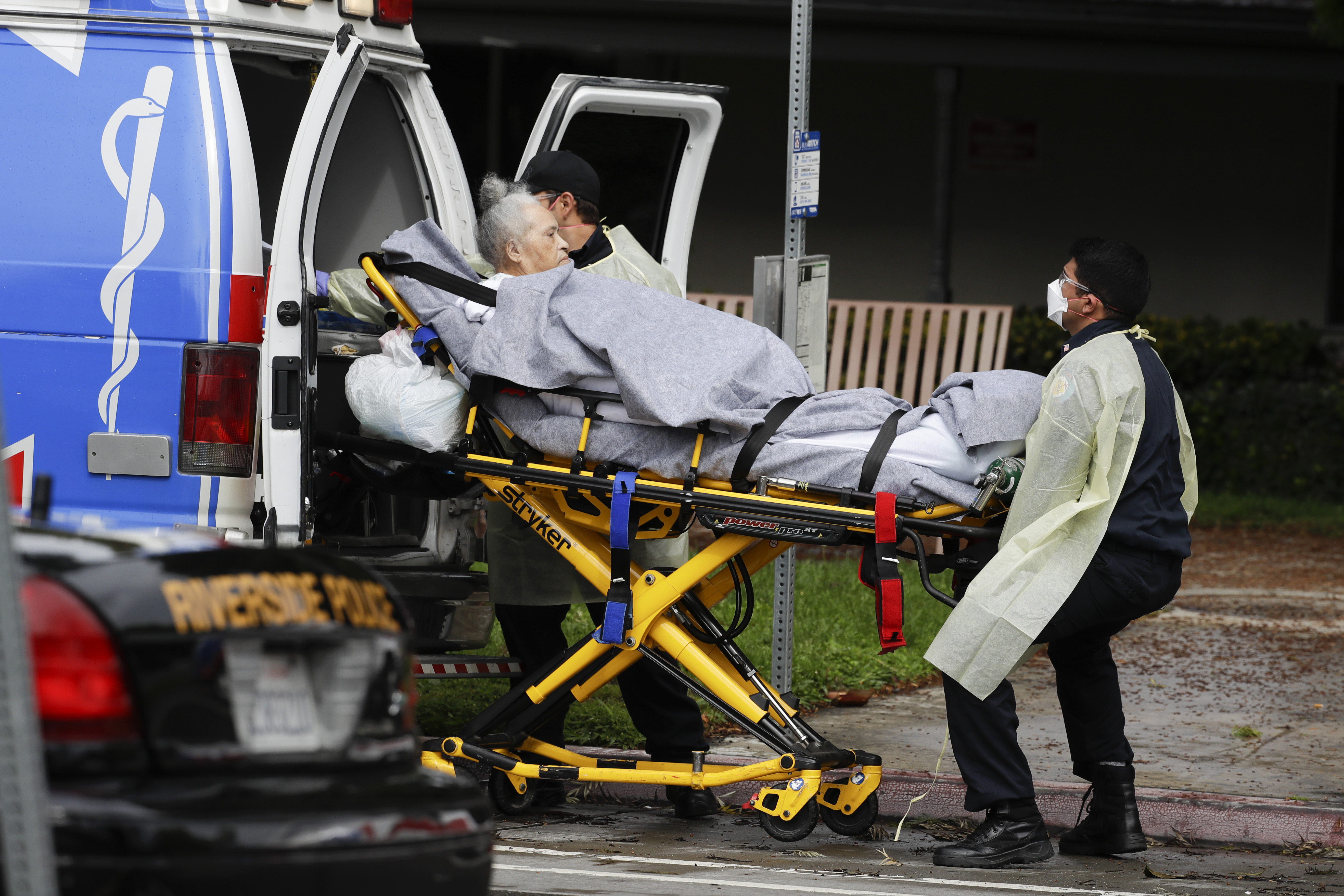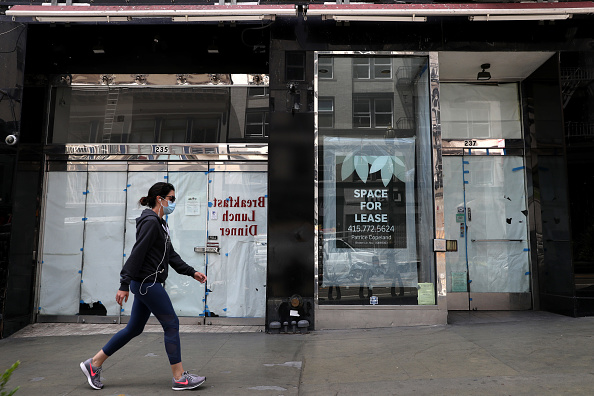Gov. Gavin Newsom released a framework Monday for reopening religious institutions that were ordered closed to the public due to the coronavirus pandemic
The guidelines include distancing measures, including limits on the number of people attending a service, and protocols for disinfecting and cleaning, such as additional hand sanitizer stations and rules around regularly cleaning microphones and other shared items.
The state is calling for limiting attendance to 100 people or 25 percent of the building's capacity, whichever is lower. That limit stays in effect for 21 days after the house of worship reopens, then conditions will be reviewed by health officials.
Face coverings are strongly recommended. The plan, outlined a dozen pages released by the state, also discourages the passing of offering plates and other items between people.
"Consider modifying practices that are specific to particular faith traditions that might encourage the spread of COVID-19," the statement posted on the state's Covid-19 response page said. "Examples are discontinuing kissing of ritual objects, allowing rites to be performed by fewer people, avoiding the use of a common cup, offering communion in the hand instead of on the tongue, providing pre-packed communion items on chairs prior to service, etc."
Distancing guidelines include a recommendation to shorten the length of services and offering additional meeting times to spread out the number of attendees to avoid large gatherings. Handshakes, hugs and other forms of greetings with physical contact also are discouraged.
Below are other recommendations. You can view the complete list of guidelines here.
- Close places of worship for visitation outside of scheduled services, meetings, etc., whenever possible.
- Discontinue large gatherings that encourage congregants/visitors to travel and break physical distances during activities, such as concerts, large holiday and life event celebrations and remembrances.
- Close children's play areas and discontinue activities and services for children where physical distancing of at least 6 feet cannot be maintained.
- Prop or hold doors open during peak periods when congregants/visitors are entering and exiting facilities, if possible and in accordance with security and safety protocols.
- Close or restrict common areas, such as break rooms, kitchenettes, foyers, etc. where people are likely to congregate and interact.
- Reconfigure podiums and speaker areas, office spaces, meeting rooms, conference rooms, etc., to allow for at least 6 feet between people.
- Establish directional hallways and passageways for foot traffic, if possible, and designate separate routes for entry and exit into meeting rooms, offices, etc., to help maintain physical distancing and lessen the instances of people closely passing each other.
- Close self-service item selection such as pamphlet displays and bookshelves and provide these items to congregants/visitors individually as necessary.
- Consider limiting the number of people that use the restroom at one time to allow for physical distancing.
- Reconfigure parking lots to limit congregation points and ensure proper separation (e.g., closing every other space).
- Discontinue offering self-service food and beverages. Do not hold potlucks or similar family-style eating and drinking events that increase the risk of cross contamination.
- Strongly consider discontinuing singing, group recitation, and other practices and performances where there is increased likelihood for transmission from contaminated exhaled droplets.
Coronavirus Deaths in Your City and State — and Across the US
These charts use daily coronavirus death data from Johns Hopkins University to show the seven-day moving average of deaths at the city, state and country level.
The impact of coronavirus varies enormously in the United States from one place to another.
Source: Johns Hopkins University.
Credit: Visuals by Amy O’Kruk/NBC, data analysis by Ron Campbell/NBC
The guidelines also recommend reduced visitor capacity and staggered visitation times at funerals, wakes, etc., if possible, and modifying religious or cultural practices when washing or shrouding bodies of those who have died from COVID-19, in accordance with guidance from the U.S. Centers for Disease Control.
"This guidance does not obligate places of worship to resume in-person activity," the statement said. "Further, it is strongly recommended that places of worship continue to facilitate remote services and other related activities for those who are vulnerable to COVID19 including older adults and those with co-morbidities. Even with adherence to physical distancing, convening in a congregational setting of multiple different households to practice a personal faith carries a relatively higher risk for widespread transmission of the COVID-19 virus, and may result in increased rates of infection, hospitalization, and death, especially among more vulnerable populations. In particular, activities such as singing and group recitation negate the risk-reduction achieved through six feet of physical distancing."
The guidelines come as health officials say two church services that were held without authorization have been sources of outbreaks.
Mendocino County public health officials say six more people who participated in a Mother's Day service at Assembly of God Church in Redwood Valley contracted the virus, raising the number of cases to nine and making the outbreak responsible for a third of local infections. Butte County health officials say two of 180 people who attended a Mother's Day church service in Oroville have tested positive for COVID-19.
Churches and other houses of worship were ordered closed to the public
on March 19. Since then many have adjusted by holding virtual services,
while a few have recently resumed in-person services in violation of the order.
Newsom said last week that the state would issue guidelines by Monday.
"We've been working throughout the interfaith community... all up
and down the state, working on the differentiation, the large mega-churches
versus more neighborhood-style churches and different styles of pews and
sanitation protocols, synagogues versus working with other faiths," Newsom said.
The U.S. Centers for Disease Control and Prevention released interim
guidance Friday for houses of worship, while continuing to warn that
gatherings present a risk for increasing the spread of COVID-19. The CDC guidance includes standard recommendations such as frequent hand-washing, encouraging face coverings for staff and congregants, frequent cleaning of surfaces and promotion of social distancing through physical set-up and limited attendance.
The guidelines also recommend changes in the way houses of worship
collect financial donations, limited physical contact such as shaking hands or
hugging, and limiting the sharing of objects such as prayer books and cups.
More than 1,200 pastors and clergy from across California sent the
governor a letter last week saying they plan to resume in-person services May
31, regardless of state restrictions.
Some churches and faith leaders have also sued the state, seeking to
compel the reopening of houses of worship, and the U.S. Department of Justice
recently sent a letter to the state warning that restrictions on such
facilities could be a violation of federal law.



